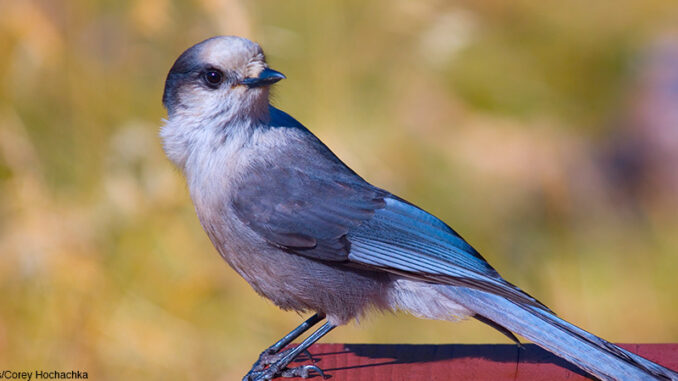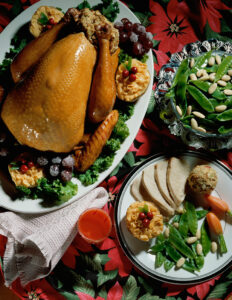
Happy Thanksgiving! Food Prices are Falling
Grocery prices have been falling for eight straight months, the longest streak of falling food prices in the U.S. since the 1960s: bad news for grocery stores, good news for consumers.

On average, egg and cheese prices have dropped 50 percent in the last year. Other staples, such as milk, bread, and meat (other than fish) have fallen as well. The reason for this is that the currently-strong U.S. economy makes our goods more expensive overseas, meaning that other countries are buying less of our food. When we continue to produce the same amount of food despite the fact that there is less demand for it, we are left with a surplus, which causes prices to fall. Low fuel prices also keep the costs of shipping and packaging food down. To help farmers combat the low food prices, the government has recently purchased about $12 million in eggs and $40 million in cheese to distribute to food-assistance programs. Nevertheless, experts estimate that the current wave of low prices could continue for several more years.
So what does this mean for you as you plan your Thanksgiving meal? According to the American Farm Bureau Federation, the average cost of a Thanksgiving dinner for 10 is now $49.87, compared to $50.11 last year. The price of a 16-pound turkey has also dropped 30 cents. However, the Natural Resources Defense Council warns against using low prices as an excuse to overbuy at the store: almost a third of the average Thanksgiving dinner for ten will end up getting thrown away.
Dig Deeper What is your favorite Thanksgiving dish? Using the Internet, look up current grocery prices to estimate how much it will cost to prepare. Then, research how much the same dish would have cost last year at this time. What is the difference?
Meet Canada's New National Bird
After a selection process that lasted for nearly two years, Canadian Geographic magazine announced last Wednesday that it has finally chosen Canada’s national bird: the gray jay.
The process was often a difficult one. It began with an online poll, in which readers cast roughly 50,000 ballots. The magazine then narrowed the list down to the top five most popular choices: the common loon, the Canada goose, the black-capped chickadee, the snowy owl, and the gray jay. A live public debate was held in September, in which experts debated the choices. The selection committee considered the opinions of these experts, as well as those of conservationists and indigenous peoples, before announcing their decision last week.
Canadian citizens have voiced their displeasure with the selection results, and with the process itself: the gray jay was only the third most popular choice in the online poll, and many people complain that it is drab to look at and not well-known enough. Others, however, argue that there is no better symbol of Canada itself: the bird is specific to Canada and yet is found in all Canadian provinces and territories, and until 50 years ago was known as the Canada jay (it also goes by the name “whiskey jack,” from an Algonquin word, Wisakedjak, meaning mischievous prankster). Above all, it is considered smart, friendly, inquisitive, and tough: while other birds migrate south to warmer climates during the colder months, the gray jay stays in Canada year-round and even nests in late winter, in temperatures as low as 30 degrees below zero. It survives by coating food with a sticky layer of saliva and then hiding it, finding it again by memory months later.
And for people who don’t feel like the bird is common enough to be a national symbol, experts have a suggestion: go camping, or take a walk in a national park, and get to know these hardy, intelligent birds for yourself.
What Do You Think? Imagine that you are on the selection committee that will choose Canada’s new national bird. Do you agree that the gray jay a good choice, or would a more popular or commonly-known bird be better? Explain your opinion in a short paragraph.
Russia Blocks LinkedIn
Effective immediately, people in Russia will no longer be able to access the business social media site LinkedIn. Russian authorities have formally blocked the site for failing to comply with a 2014 law which came into effect last year, requiring Web sites that store the personal data of Russian citizens to do so only on Russian servers. Until now, Russia has not enforced the law.
LinkedIn, an American company, has roughly six million registered users in Russia. Other American social networking sites, such as Facebook and Twitter, are much more popular there. Many critics of the decision are worried that this case might be the first step toward blocking these other more popular social networking sites, which don’t use Russian servers for their data either.
Russian authorities argue that they are trying to protect the personal data of their citizens from sites that are vulnerable to hacking. In the past, other U.S. technology corporations such as Google and Twitter have clashed with Russia over this same issue, arguing that moving data to Russian servers will open the door to increased access by the Russian government.
The LinkedIn ban comes at a time when tension between the U.S. and Russia over cybersecurity is already high. During the recent American presidential election, Russia was accused of hacking into Democratic Party emails and releasing them to Wikileaks, which Russia denies. Nevertheless, many critics view this latest development as yet another instance of Russia tightening control over its citizens’ Internet freedom.
Russian users who keep their accounts open will likely be able to access them when travelling outside of Russia.
What Do You Think? Imagine that the U.S. government has decided to block access to your favorite social media site. How would you react? Do you believe that a government has a right to deny its citizens access to certain websites for security reasons? Why or why not?
Toy Hall of Fame's Newest Members
The National Toy Hall of Fame, located at The Strong National Museum of Play in Rochester, New York, has recently announced its 2016 inductees: the swing, Fisher Price’s “Little People,” and Dungeons & Dragons.
Currently, 62 toys have been inducted into the Toy Hall of Fame. The nomination process is open to the public; this year, over 4,200 nominations for 780 different toys were received. An internal committee narrows the list down to 12 finalists, considering factors such as a toy’s popularity, educational value, and how long it has been on shelves. A national advisory committee then ranks their top three choices. Toys that were nominated this year but didn’t make the cut include Care Bears, coloring books, and the games Clue and Uno. Past inductees have included bubbles, green army men, the Rubik’s Cube, and Twister.
The Strong Museum acquired the National Toy Hall of Fame in 2002 from A.C. Gilbert’s Discovery Village in Salem, Oregon. In 2015, the museum, whose mission is to help present and future generations understand the role of play in human and cultural development, also established the World Video Game Hall of Fame.
